


See attached flyer for dates and times and $1.00 off coupon. Show-Me Rockhounds will have tables with Great finds from mineral specimens, geodes, flint knapped projectile points, pre-forms/blanks, agate slabs, cut and polished agates, tumbled rocks, jewelry and more. There will be a Tribute to a Former member, and the Mary Bergman Hamilton Book of Minerals will be offered for sale. Hope to see you there!

Introduction to the Mary Bergman Hamilton Collection of Minerals
In 217, the children of Mary Bergman Hamilton donated her lifetime collection of minerals to the Show-Me Rockhounds. In order to share this gift with other rockhounds and interested earth science students, our club has put together this publication.
Mary had divided her collection into minerals she had purchased, those she had traded for, and those that she had found on rockhounding field trips. We have followed this same format in how we have organized this book. At the beginning of each section we have some tips for how you, as a rockhound, can add to your collection using these methods.
A number of the minerals in the collection fluoresce under short- or long-wave ultraviolet light. We have added a section to the book to highlight these minerals and explain a little about fluorescence.
We have a page showing the collection as it was displayed at the 60th Annual Kansas City Gem and Mineral Show in 2022.
Finally, there is a page of the book to emphasize the importance of good recordkeeping and labeling of a mineral collection. We show Mary’s method of index cards and mineral labeling.
We hope that this book will inspire both novice and experienced rockhounds by showing what a dedicated amateur can accomplish.

We have books available for $15.00 per copy. If you are interested in purchasing a copy(s) you may email Dan Snow President of the Show-Me Rockhounds of Kansas City at showmerockhounds.com

The American Chemical Society is hosting a live webinar called “Chemistry Rocks! – Exploring the Chemistry of Rocks and Minerals” on Tue, Oct 24, 2017 from 6:00 PM – 7:00 PM CDT. We are surrounded by rocks and minerals everywhere…in the ground we walk on, the places we work and live, and even in the food we eat. How are chemists experimenting with these fundamental materials to help the world and make our lives better? Ask questions live to the experts regarding the amazing work that is being done in rock and mineral science.
To see the webinar, sign up at GoToWebinar and fill out the form. They will send you an email to confirm. Then, on Tuesday at 6PM Central Time, follow the link in the email, make sure you have your computer’s sound turned on, and enjoy!
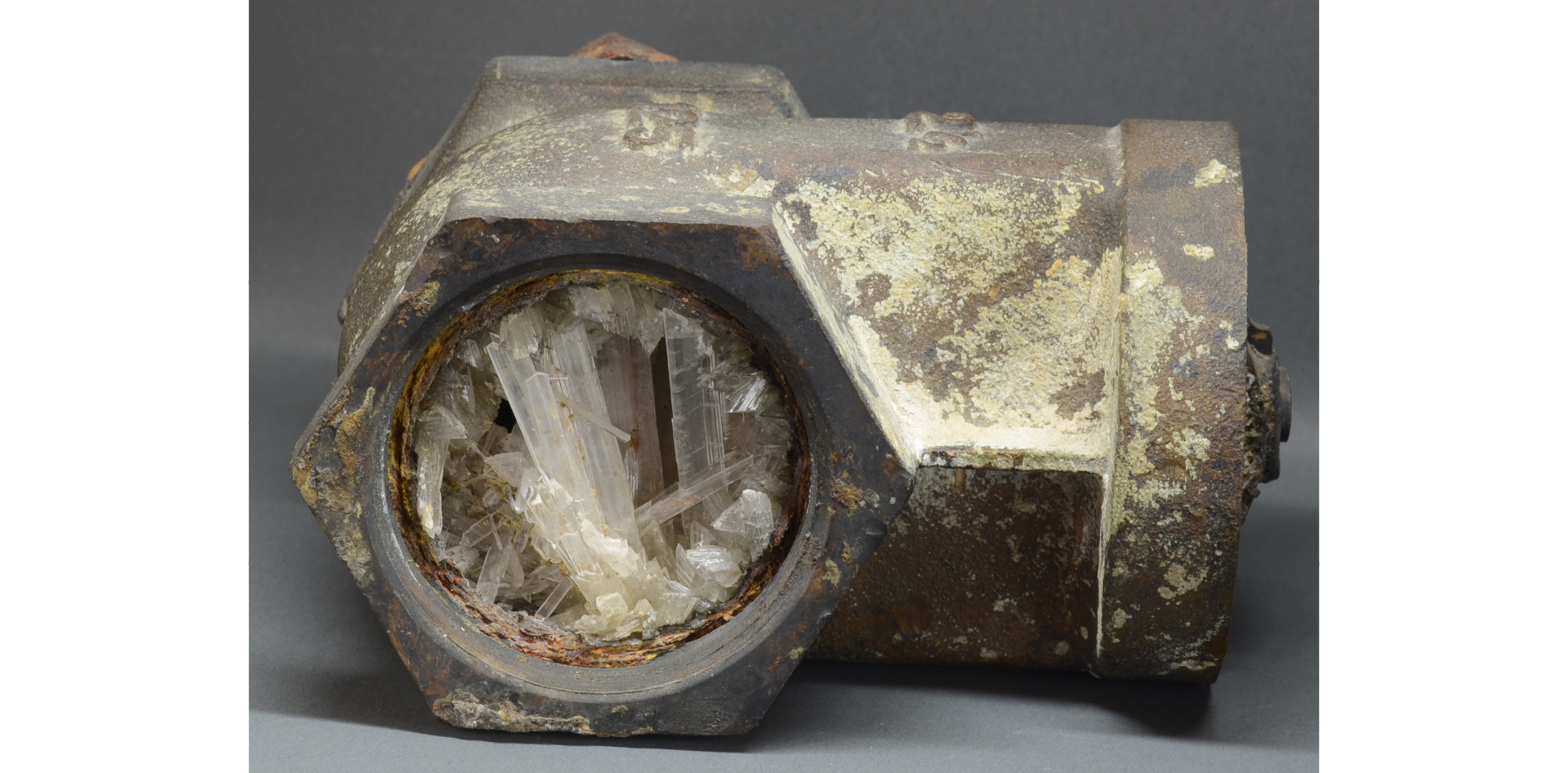
Steve Hardinger and Dragon Minerals. Retrieved from Mindat Photo of the Day
Everyone knows Kansas City’s water tastes really good, despite being “hard water.” Kansas City municipal water averages 100 ppm (CaCO3 equivalent), which is classified as “moderately hard” by the Water Quality Association. But these people’s hard water would be off the charts!
A valve was stuck in a pipe somewhere in the Naica mining complex in Chihuahua, Mexico. “The valve was removed with the aid of a saw, and voila! the pipe was completely clogged with fine, colorless and gemmy gypsum crystals to 7 cm.”
No word on what they did with the crystals after they unclogged the pipe.
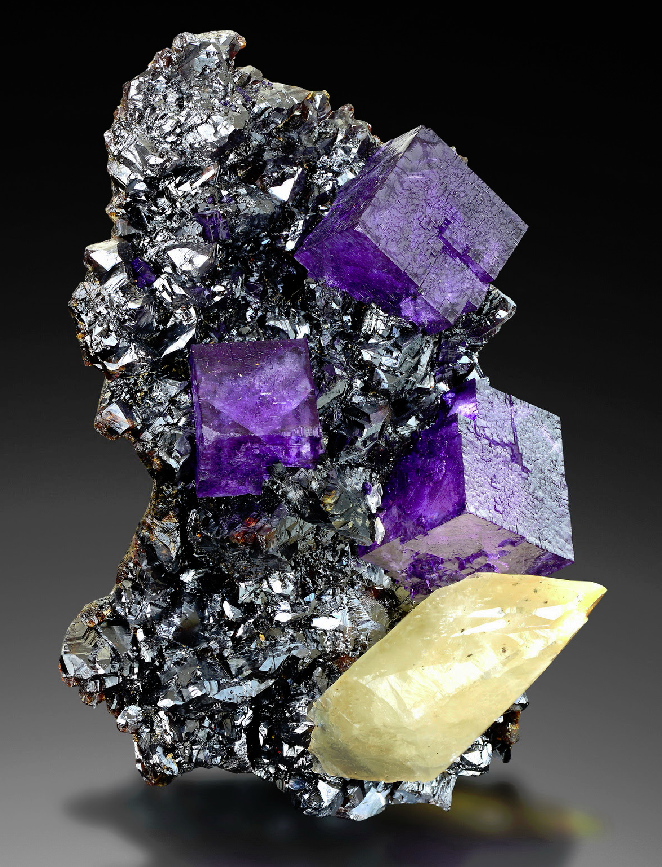
Photo by Anton Watzl
Here is some fluorite (purple) and calcite (yellow) on sphalerite (silver). No further comments, I just thought this was pretty.
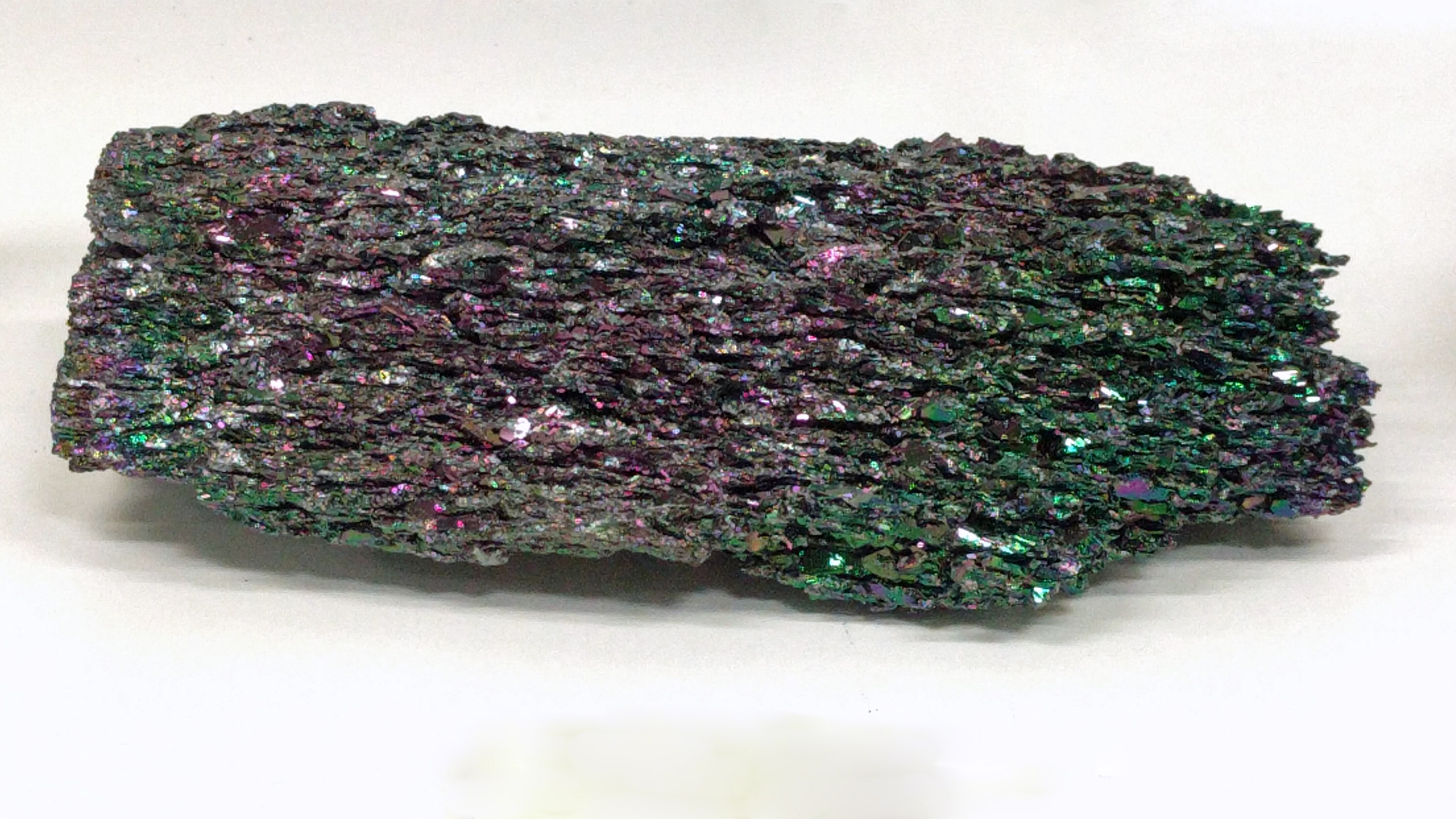
In Mark Sherwood’s case at the Spring 2017 show. Photo by Stephanie Reed
At Mark Sherwood’s talk “Earth Science… Facts, Frauds and Scams” he mentioned carborundum (also spelled carborundrum). It is made of silicon carbide, but it is not a natural mineral that you can find in the ground. If you want to find some carborundum, look in a chimney. At an iron foundry, the carbon and silicon in the smoke rise and precipitate on the inside of the chimney. When the chimney is cleaned, they find these nice silicon carbide deposits. They are iridescent and pretty enough to buy, but don’t be fooled. Some sellers will say that carborundrum or moissanite and pretend like it is from some secret mine or even a meteorite, but it is really a man-made mineral.
Note: Moissanite is a naturally occurring silicon carbide, but it is very rare and it doesn’t look like the specimen pictured above. It actually looks like tiny green glass crystals. They are usually heat treated to increase clarity. If so, the seller needs to disclose that the specimen has been heated or they are being fraudulent. Buyer beware.

Photo by Stephanie Reed
This hematite and magnetite specimen is from Patagonia, Argentina. Bruce got it at the Denver show and gave it to Sharon Penner. It’s about 4 inches long and pretty shiny.
In November 2016, we went to see Marv Dahmen’s collection of vintage Joplin/Tri-State mining equipment and minerals. He talked about it for 5 hours but there was never a dull moment. We managed to record some of it, although it was so long Stephanie and David ran out of space on their phones. Here are some photos.

Everyone listening to Marv. Photo by Stephanie Reed
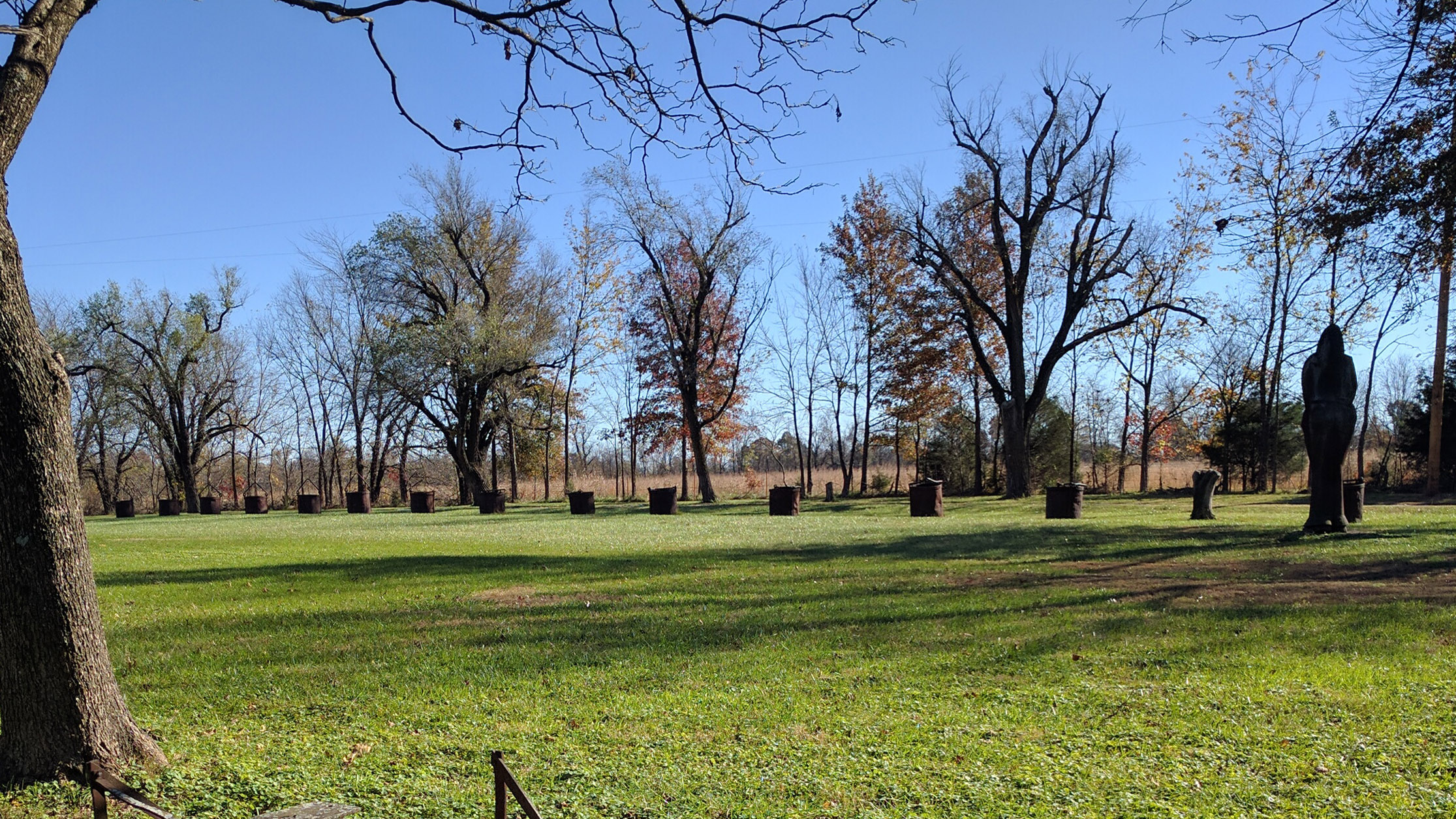
Ore buckets as far as the eye can see! Photo by David Reed

Ore crusher. Photo by Stephanie Reed
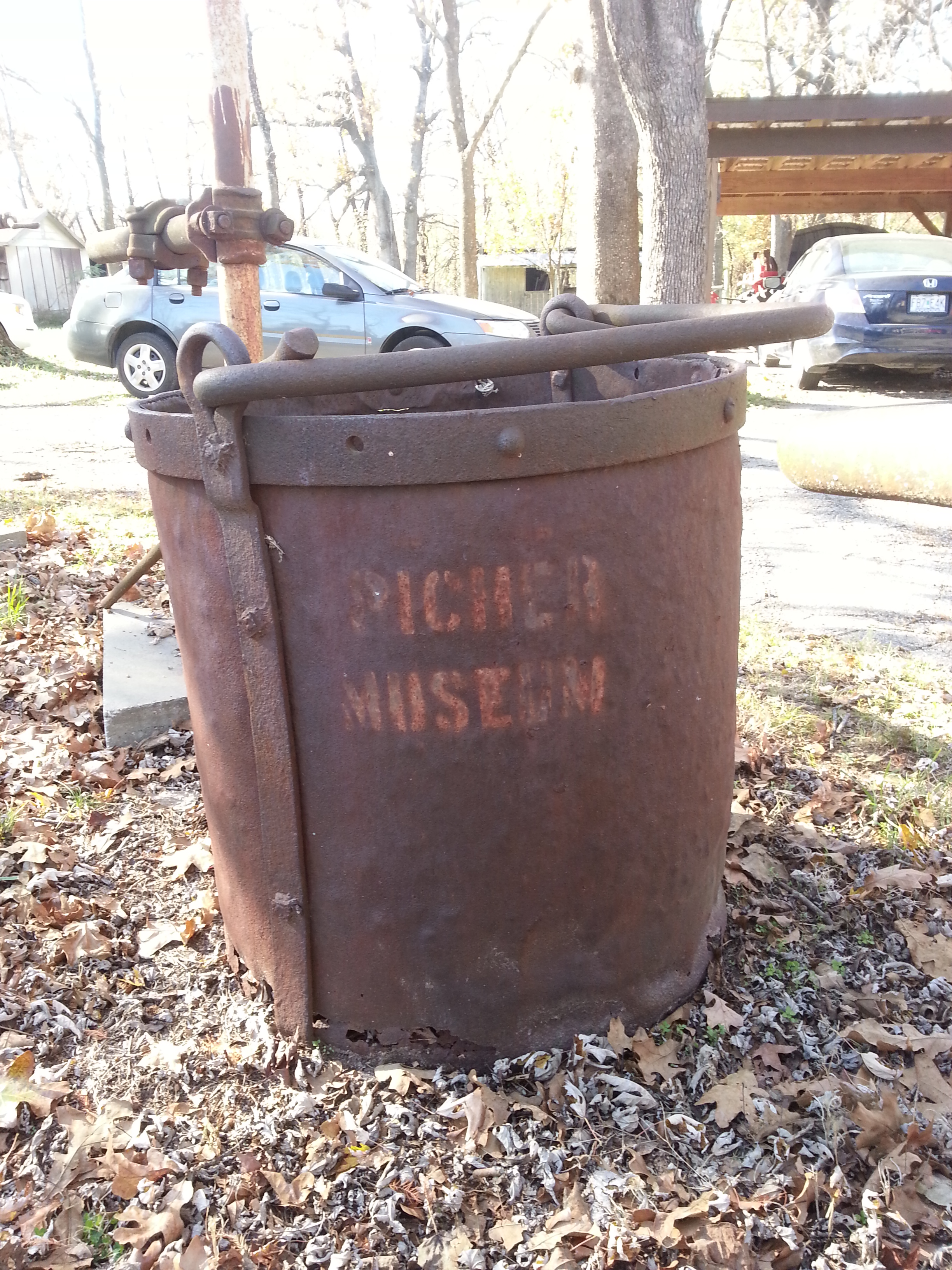
Most of the things outside are from the Picher Museum. Photo by Stephanie Reed
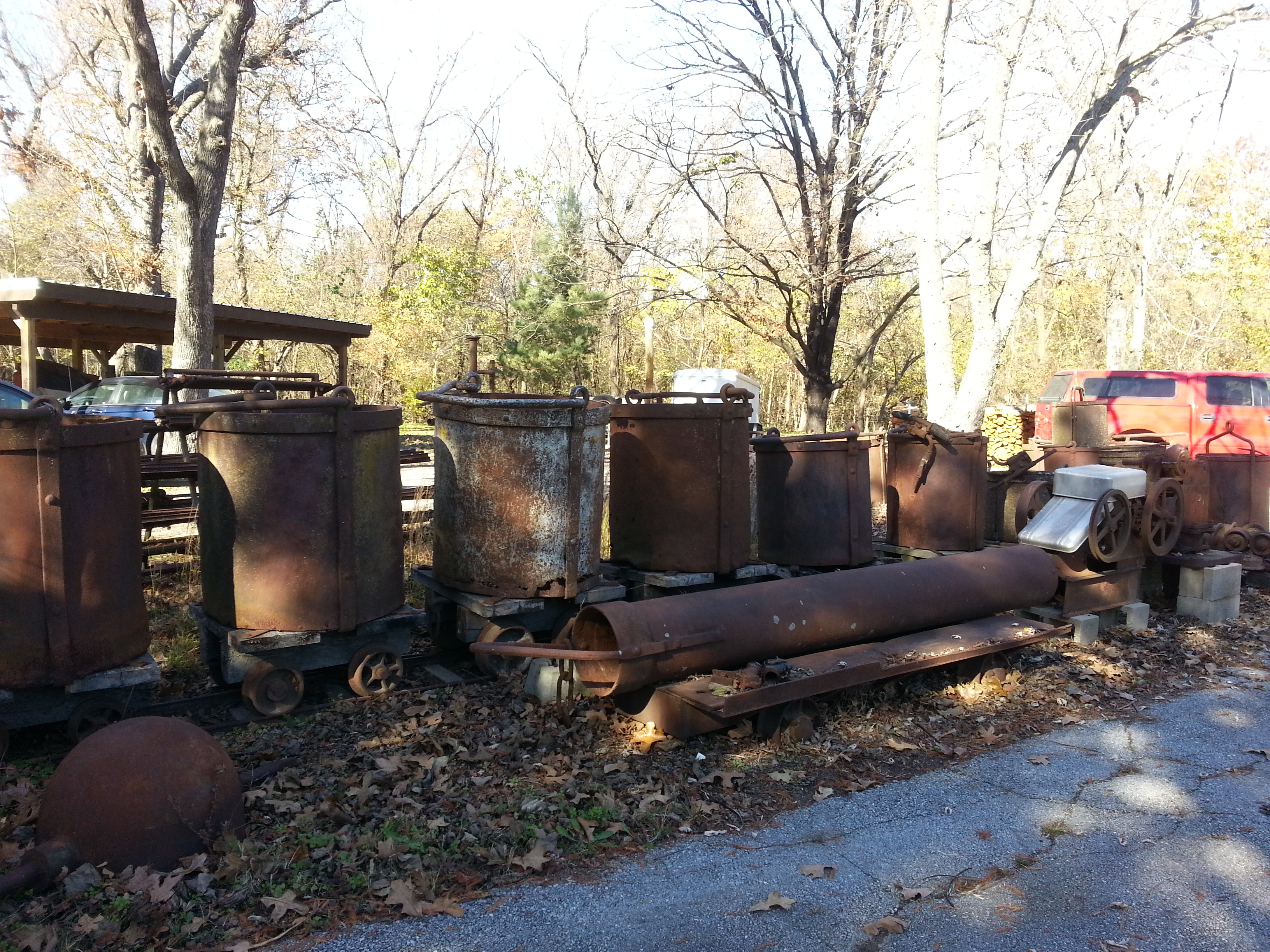
Ore buckets, a crucible, and one of the only 2 remaining drill bit buckets. They were sold for scrap metal when the Picher Museum was having hard times. Marv got them from the scrap metal place. Photo by Stephanie Reed

This is not an ore bucket. This is a dewatering bucket. Photo by Stephanie Reed
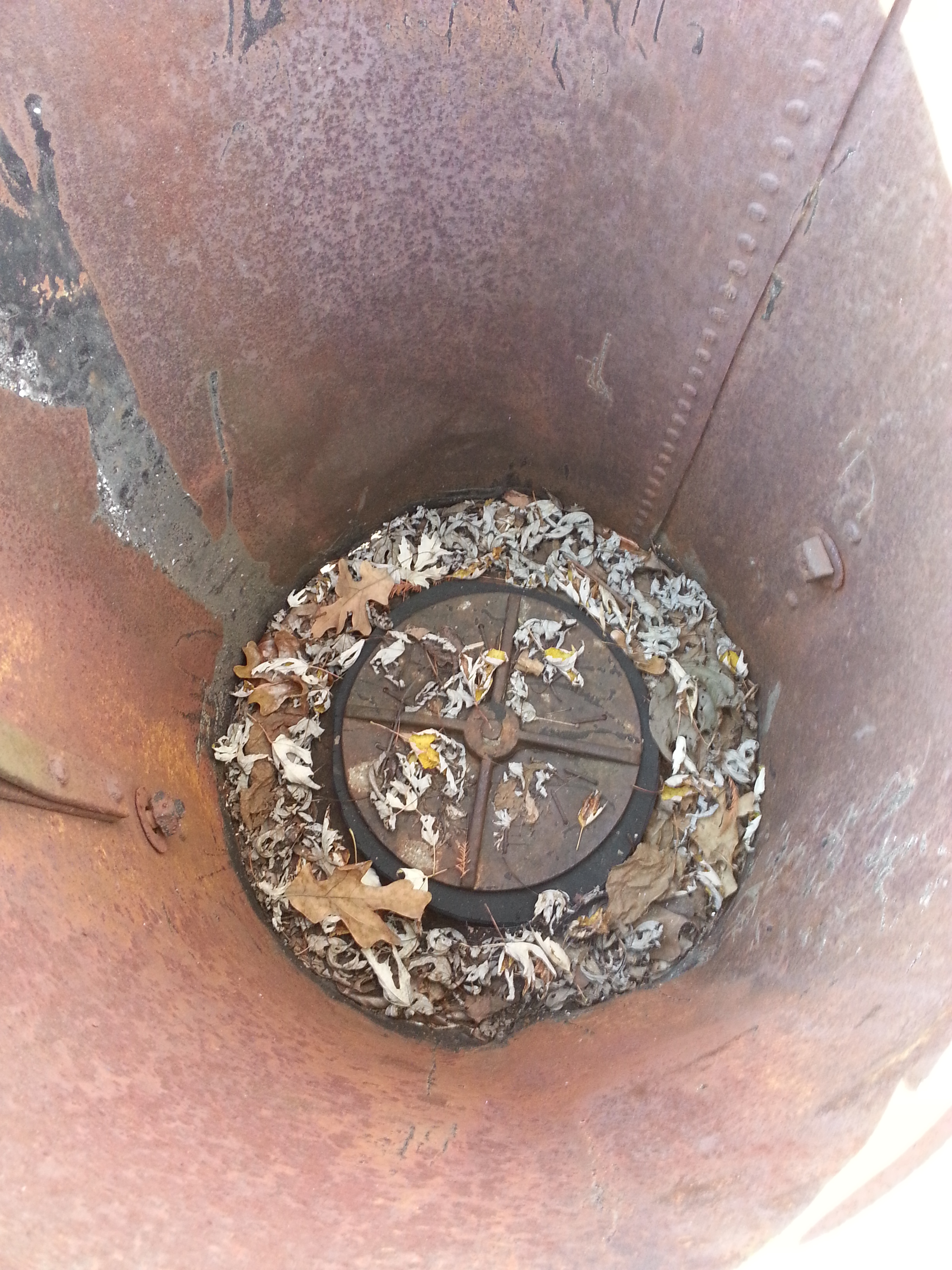
The inside of a dewatering bucket has a plunger inside. Photo by Stephanie Reed

A drill. Photo by David Reed

Photo by David Reed

Calcium carbide and some lamps. Photo by David Reed

These long scoops are used to clean out the holes before putting in the dynamite. If you hit some debris while loading the dynamite it might explode. Photo by David Reed
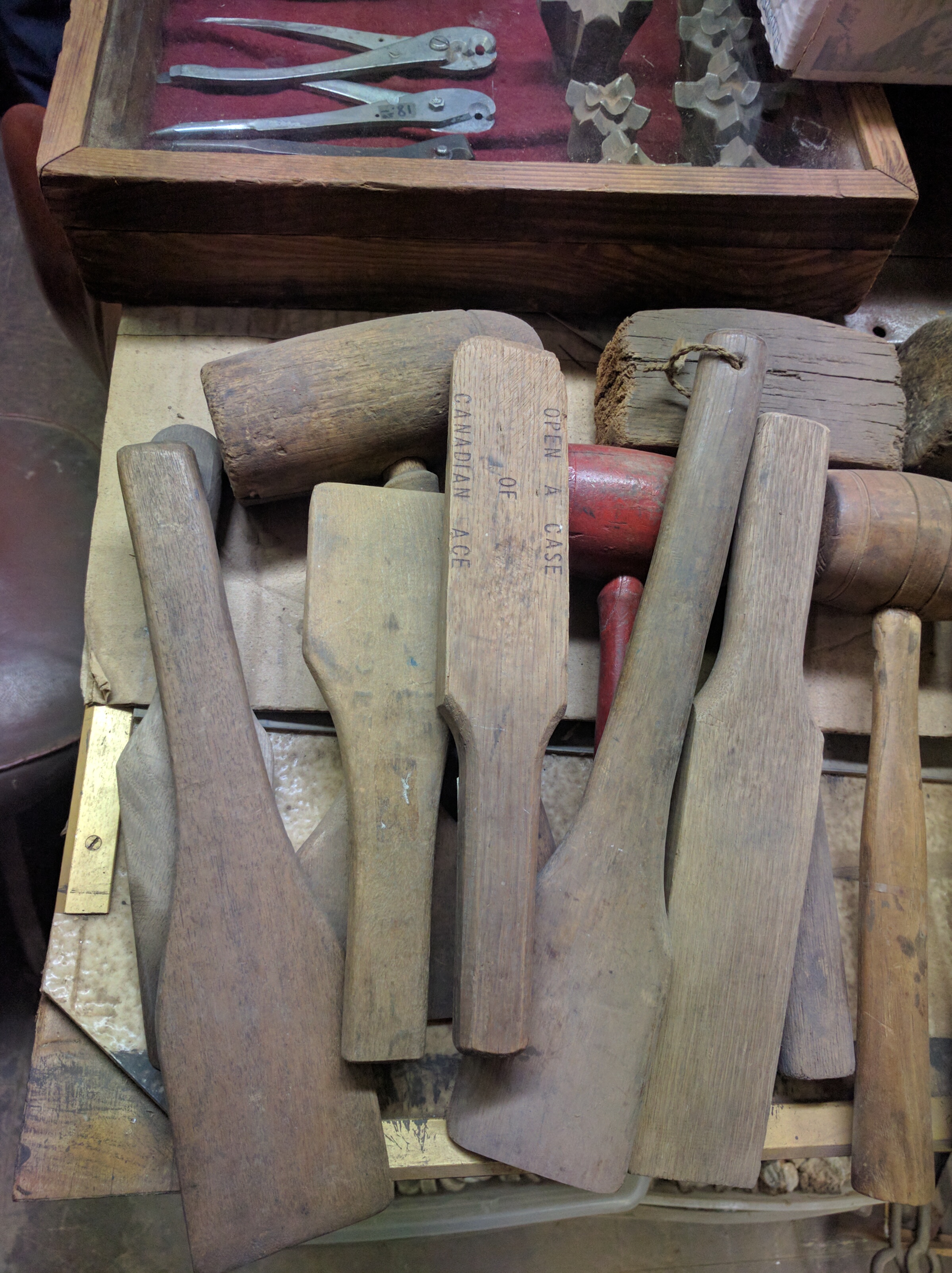
Wooden paddles for opening boxes of dynamite. It is too dangerous to use a metal implement. Photo by David Reed
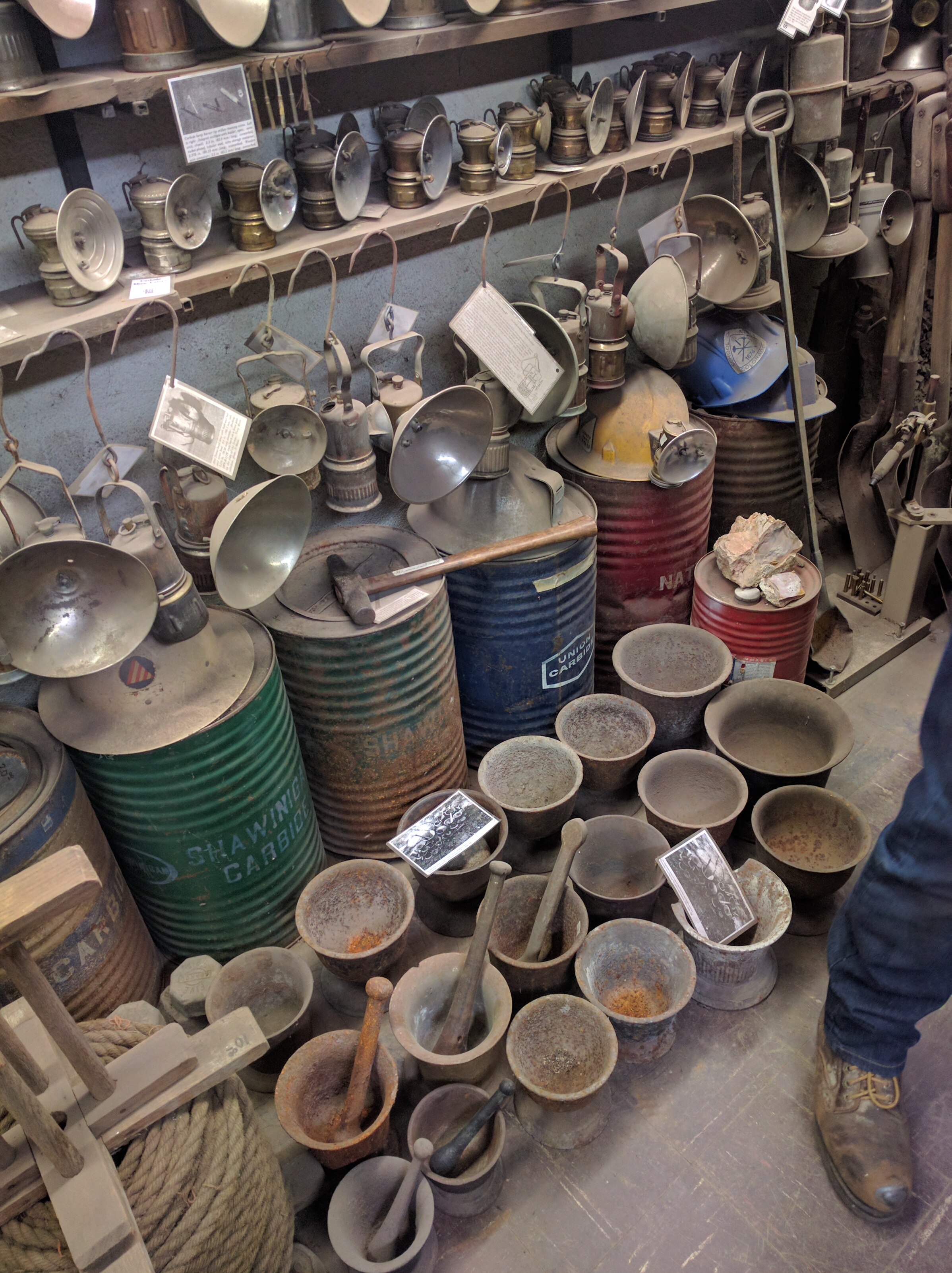
Lamps, containers of carbide, and mortars and pestles. Photo by David Reed
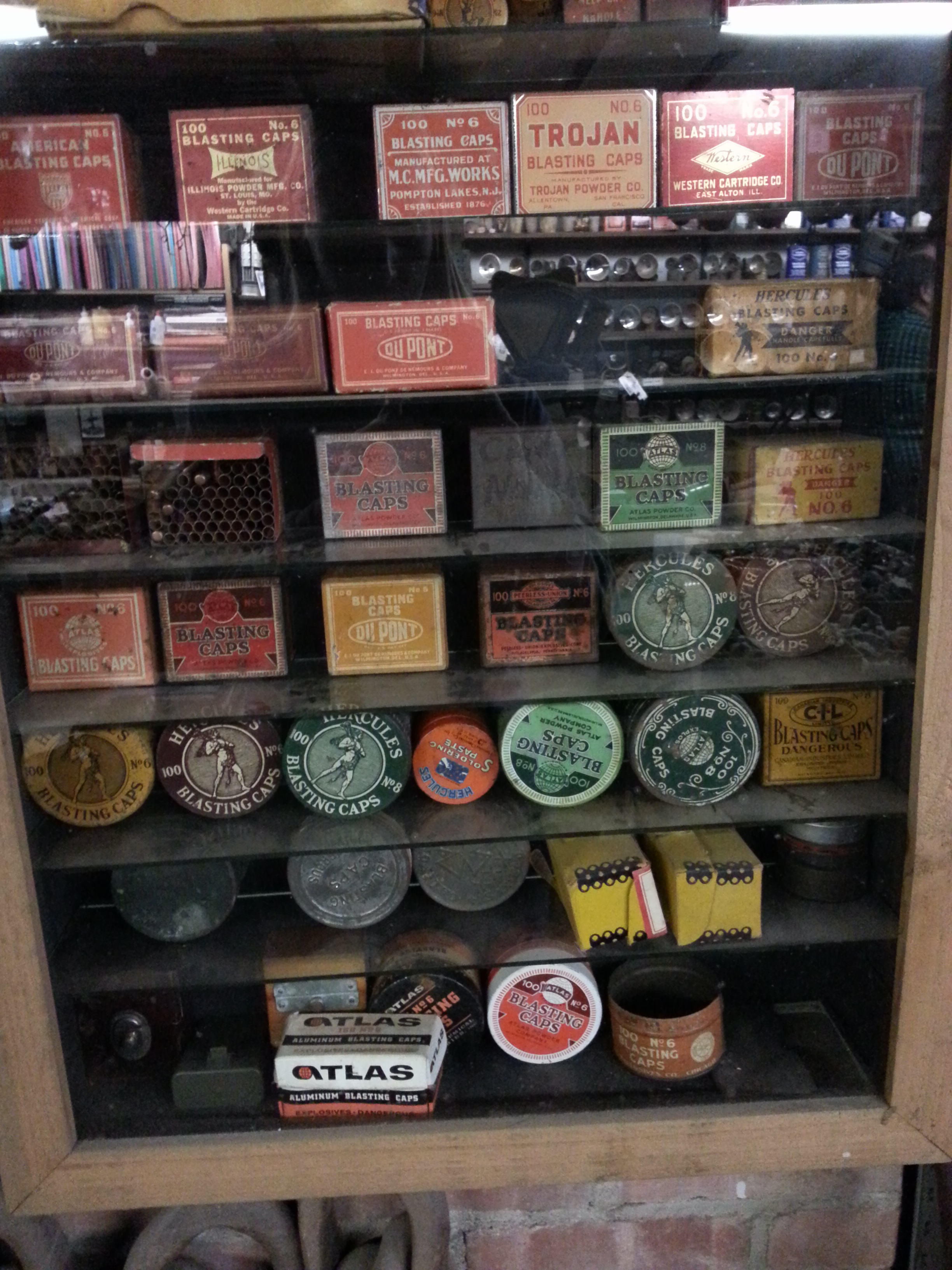
An impressive display of blasting caps. Photo by Stephanie Reed
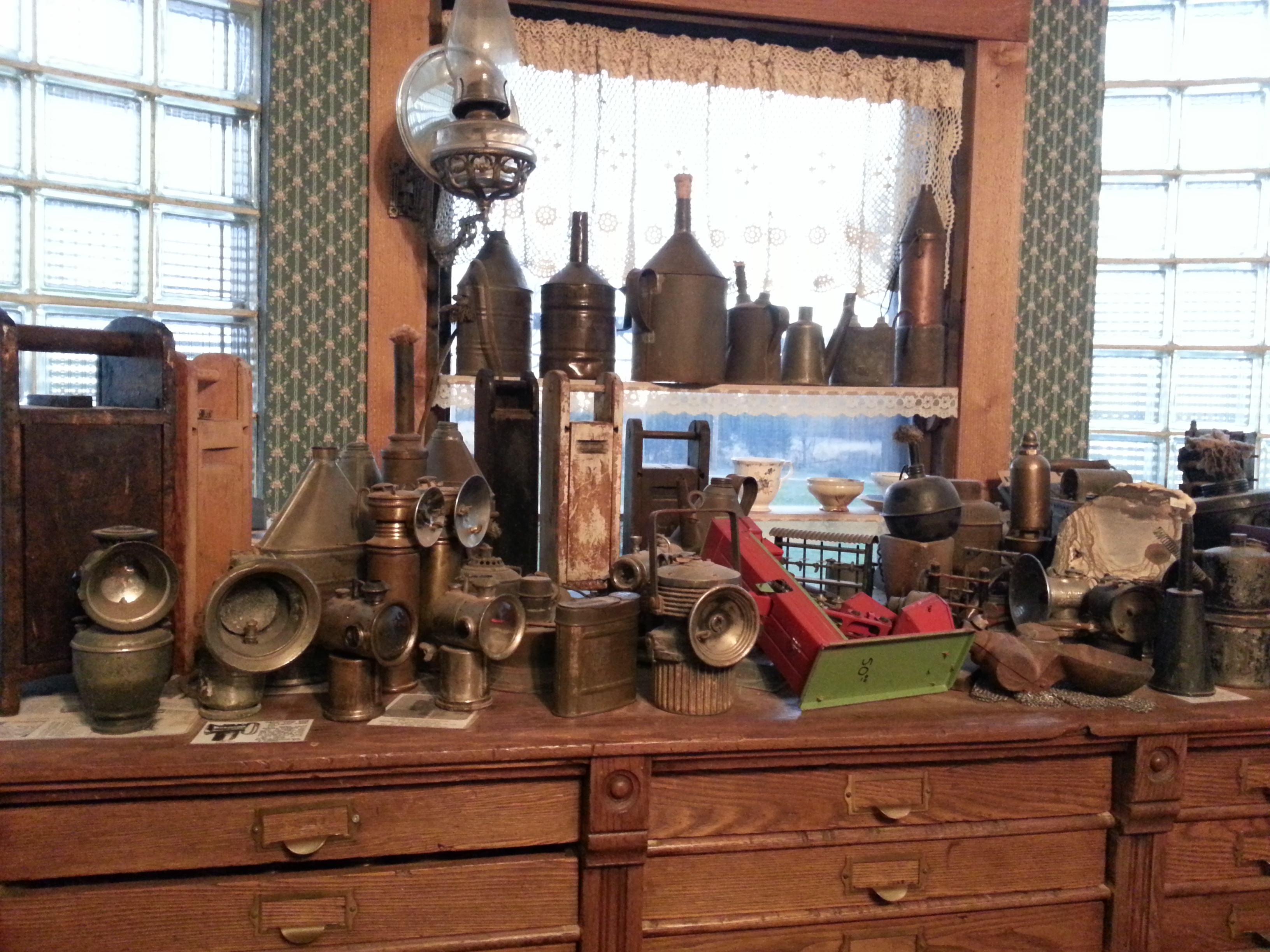
Guy’s dropper lamps. These were used before carbide lamps were invented. Photo by Stephanie Reed

Marv in his workshop. On the table are some slabs that will soon be cut into cabs, and there is a curved plate that can be coated with ink and used to label boxes of Hercules dynamite (with removable plates for dates, lot numbers, etc.). Bucyrus Erie is a mining equipment company. Photo by David Reed
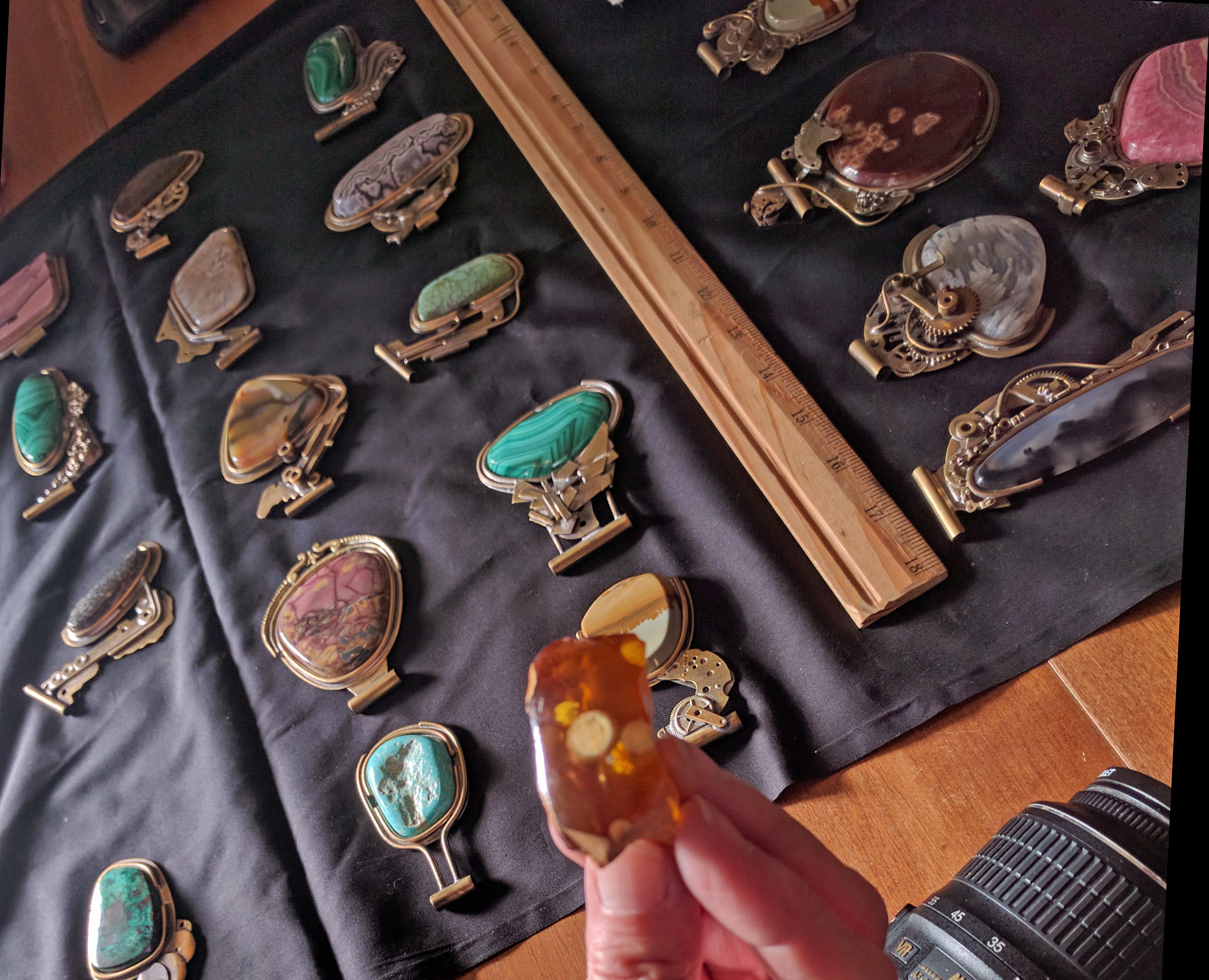
Marv also makes jewelry. Photo by David Reed
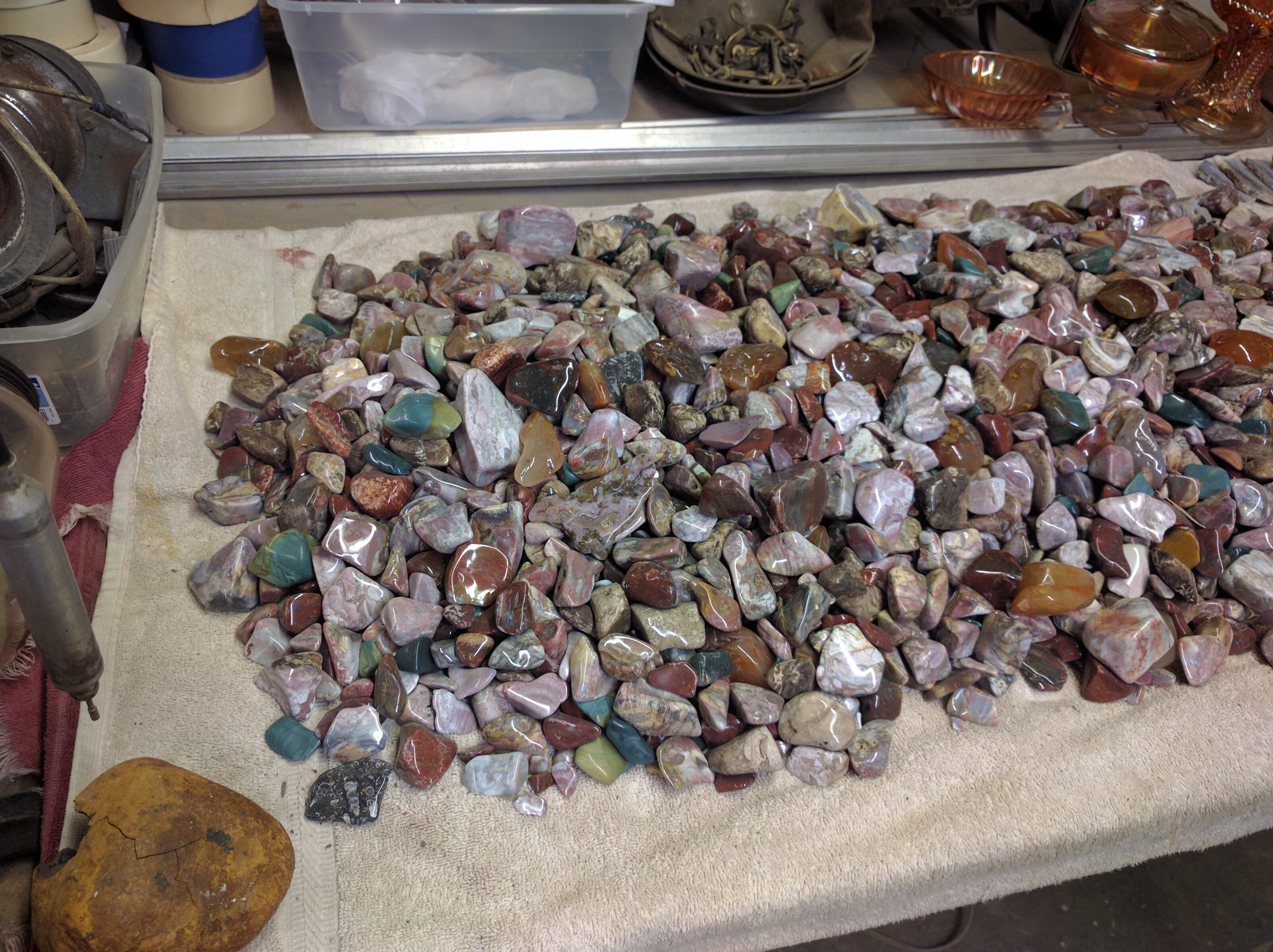
Some of his freshly tumbled rocks. Photo by David Reed

Part of Marv’s rock collection. Photo by David Reed

Lots of Owyhee Jasper from Oregon and Idaho. Photo by David Reed
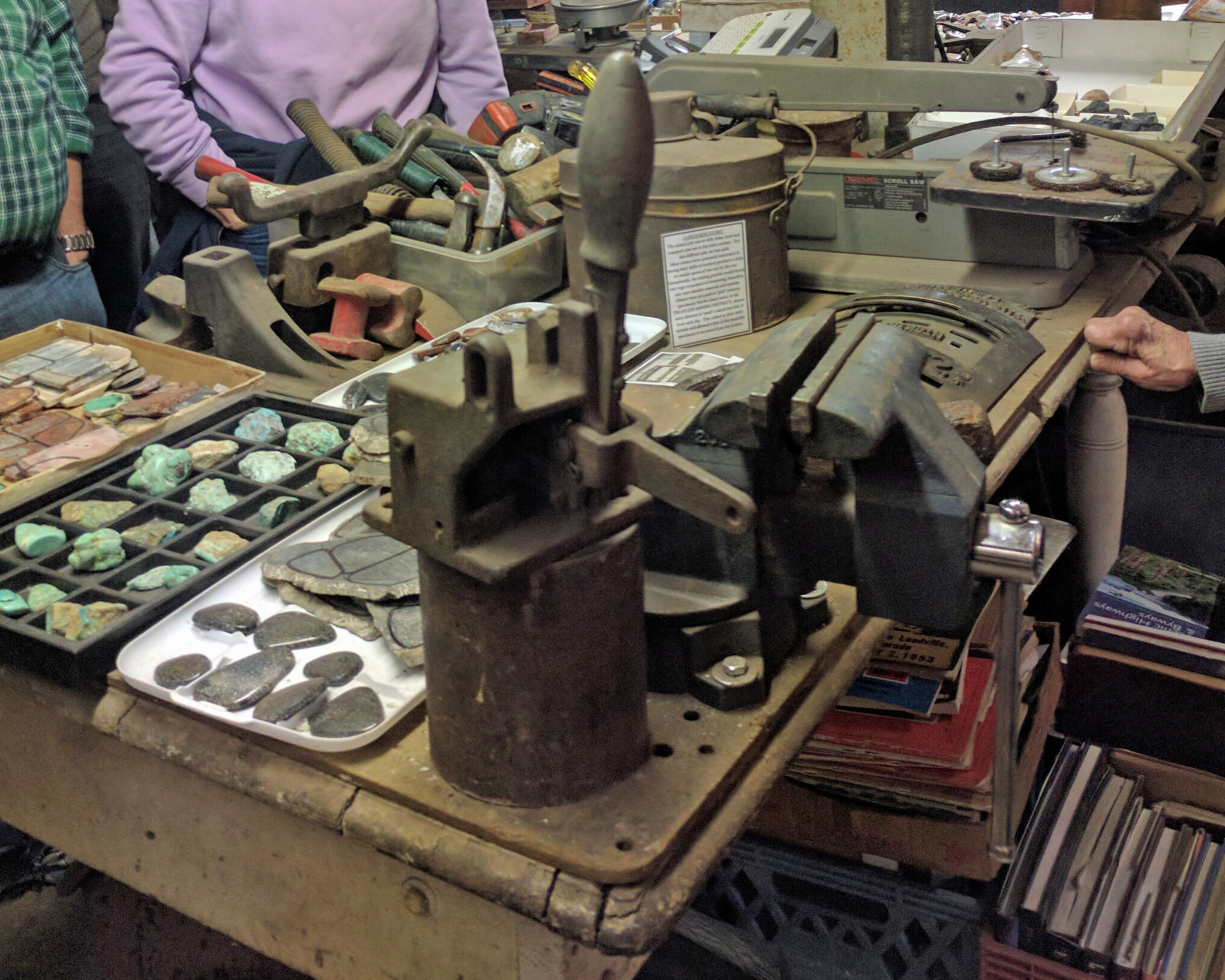
A device for crimping blasting caps. It is extremely rare. Photo by David Reed
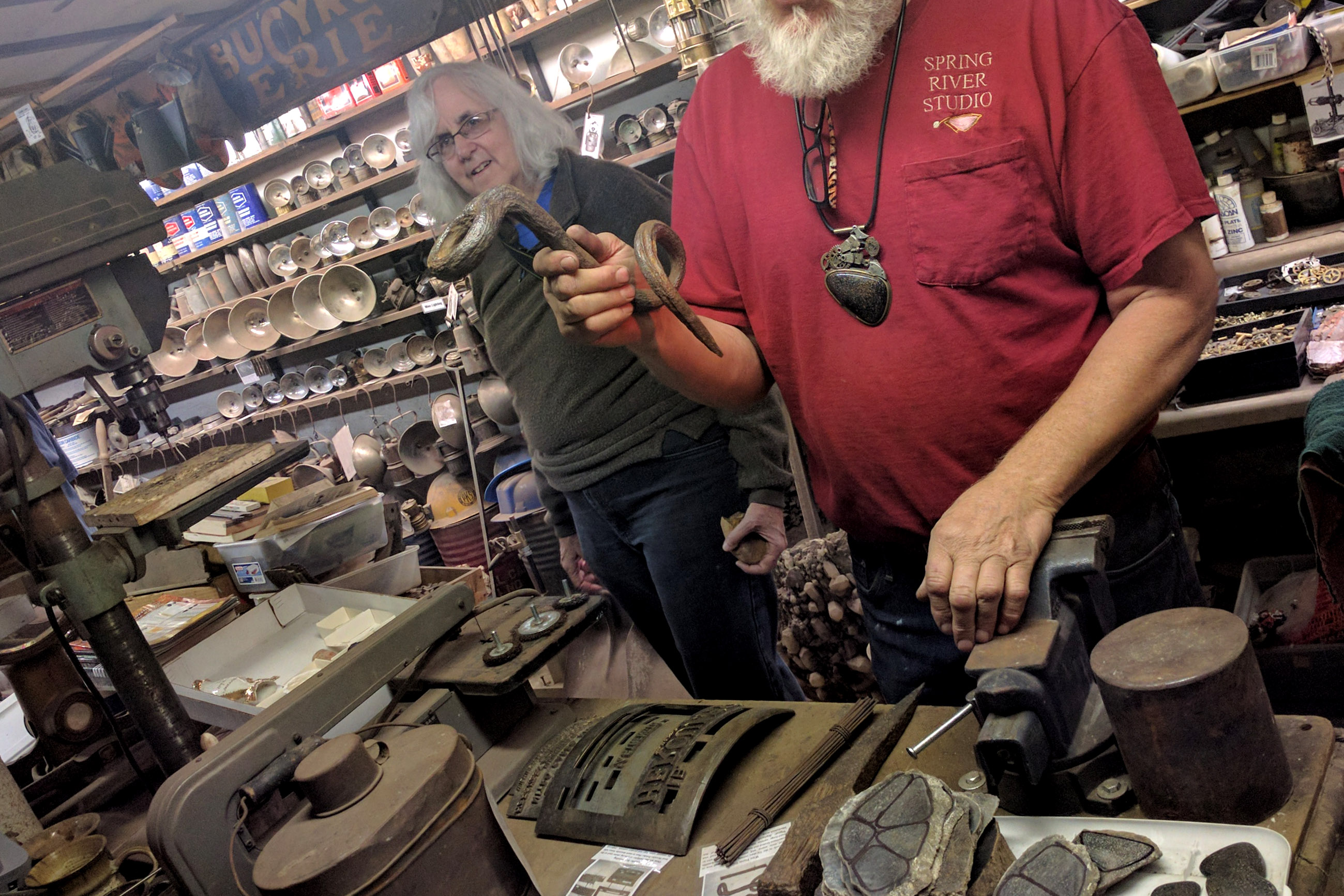
This is a pigtail, which is a blacksmith-made hook for ore buckets. It is specially curved so that the bucket won’t fall off while it is being raised up. Photo by David Reed
Thank you Marv for inviting us on your property and into your home to see your amazing collection!

Amethyst cathedral at the Sutton Museum. Photo by Stephanie Reed
Article by Dr. Bill Cordua, University of Wisconsin-River Falls
Have you ever been to a show and seen enormous amethyst geodes or crystals 3-5 feet or more in height? The tubular geodes are lined with deep purple gemmy amethyst crystals. How do such wonders form?
These excellent geodes come from a region along the Brazil-Uruguay border. The genesis of deposits on the Brazil side of the border has recently been extensively researched by an international team of geochemists lead by H. Albert Gilg of Techniche University Munchen in Germany (Gilg, et. al., 2003). The geodes are mined from several lava flows belonging to the Parana Continental Flood Basalt Province. This was one of the largest outpourings of basalt lava known. An estimated 800,000 cubic kilometers of lava extruded over an 11 million year time span. For comparison, this would be enough to cover Minnesota with a pile of basalt lava over 2 miles high. The lava outburst occurred as part of the opening of the South Atlantic Ocean during Cretaceous time about 130 million years ago. Of all these flows, however, only a few are known to host amethyst cathedral geodes.
Gilg et al. proposed a 2-stage model for their formation. In the first stage the large hollows form. This was caused as volcanic gases were released from certain lavas as they cooled. Not every lava has enough dissolved gas to form such big openings. As gas bubbles emerged from the congealing lava (much as bubbles emerge when beer or soda pop is poured) they coalesced as they rose. The lava was cooling fast too, and soon became so thick and sticky that bubbles quite rising and were trapped. The bulbous to tubular shapes thus point towards the top of the flow, a fact easily seen when the geodes are in place in the mines. These cavities, though, were empty of crystals.
The second stage was the formation of the amethyst, plus celadonite, calcite and gypsum fillings. An important clue to this event is the presence of small gas and liquid bubbles (called fluid inclusions) trapped within these minerals. These are samples of the mineral-forming liquids caught as the crystals grew. Fluid inclusions are treasure troves of information when studied with sophisticated instruments. Analyses of the fluid inclusions in the amethyst, calcite and gypsum show them to be filled with slightly salty water. This water had a temperature of no more than 100 degrees C, and possible less than 50 degrees C, during mineral formation. These cannot be fluids related to the magma that formed the lavas.
What was the source of these fluids? An amazing story unfolds from the radiometric dating of the minerals. The basalts formed about 130 million years ago, but the green celadonite, which makes up the rinds of the geodes, formed about 70 million years ago. For 60 million years these enormous cavities sat empty of crystals. Trace element data from the fluid inclusions gives another important clue to the source of the mineral-forming fluid. Below the lavas is a large aquifer (the Botucatu aquifer) filled with ground water that closely resembles the fluid inclusion liquids. Uplift and tilting of the area about 70 million years ago would force water out of the aquifer into the porous areas of the overlying lava. In the lava flow these waters would have found volcanic glass. Glass breaks down over geologic time and makes silica and other chemicals available in a form that is readily soluble in water soaking through the rocks. The water carried these chemicals into the cavities, where the amethyst and other minerals grew due to cooling and pressure release.
The special combination of geologic circumstances, unfolding over millions of years, is not often duplicated. Understanding the process gives geologist tools to prospect more efficiently for these wonders.
Reference:
Gilg, H. et. al, 2003, “Genesis of amethyst geodes in basaltic rocks of the Serra Geral Formation (Ametista do Sul, Rio Grande do Sul, Brazil): a fluid inclusion, REE, oxygen, carbon, and Sr isotope study on basalt, quartz and calcite” Mineralium Deposita vol. 38, p. 1009-1025.
The Glacial Drifter 08/2011, The Gemrock 06/2015